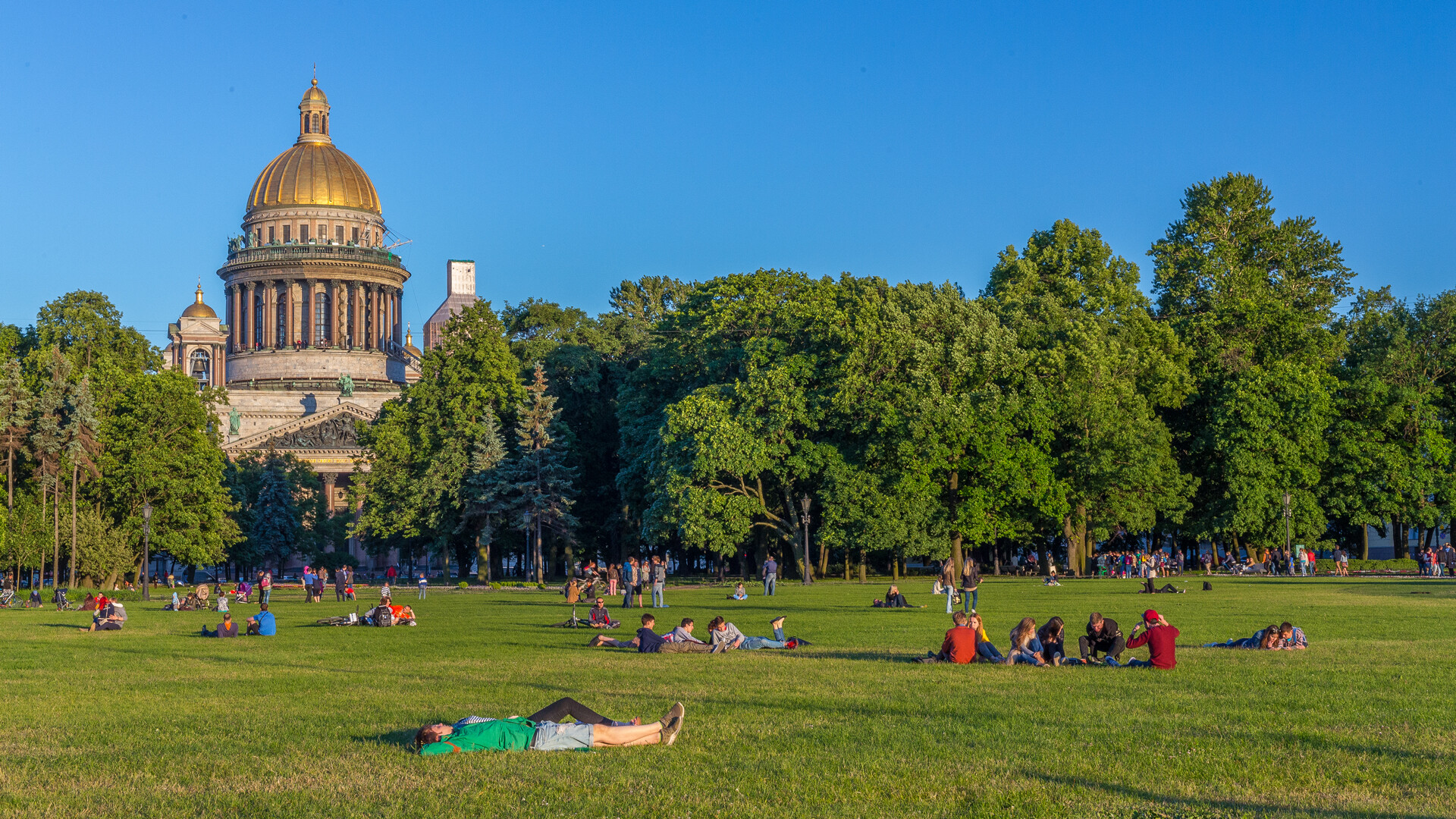
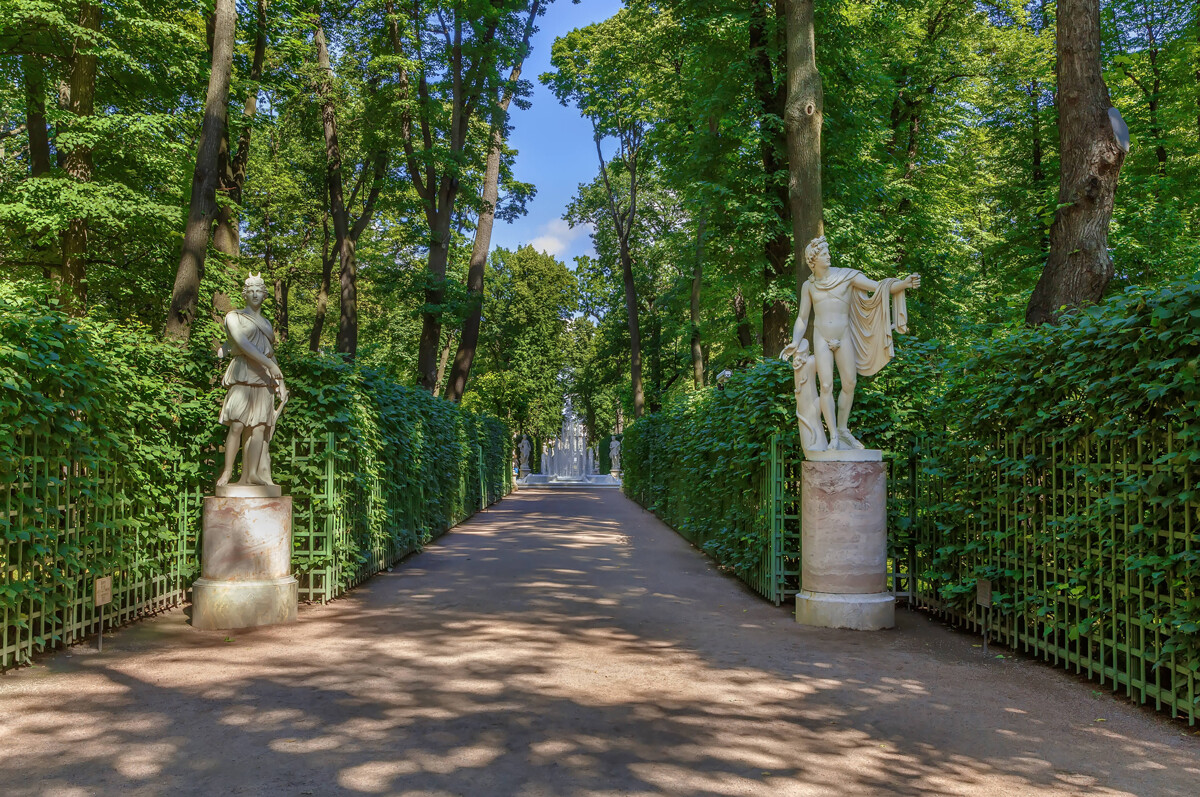
Sculptures of the Summer Garden
Legion MediaFounded by Peter the Great in 1704, this park in fact occupies a small island. Initially, the emperor’s summer residence was located in this park, which was designed and modeled after the Park of Versailles.
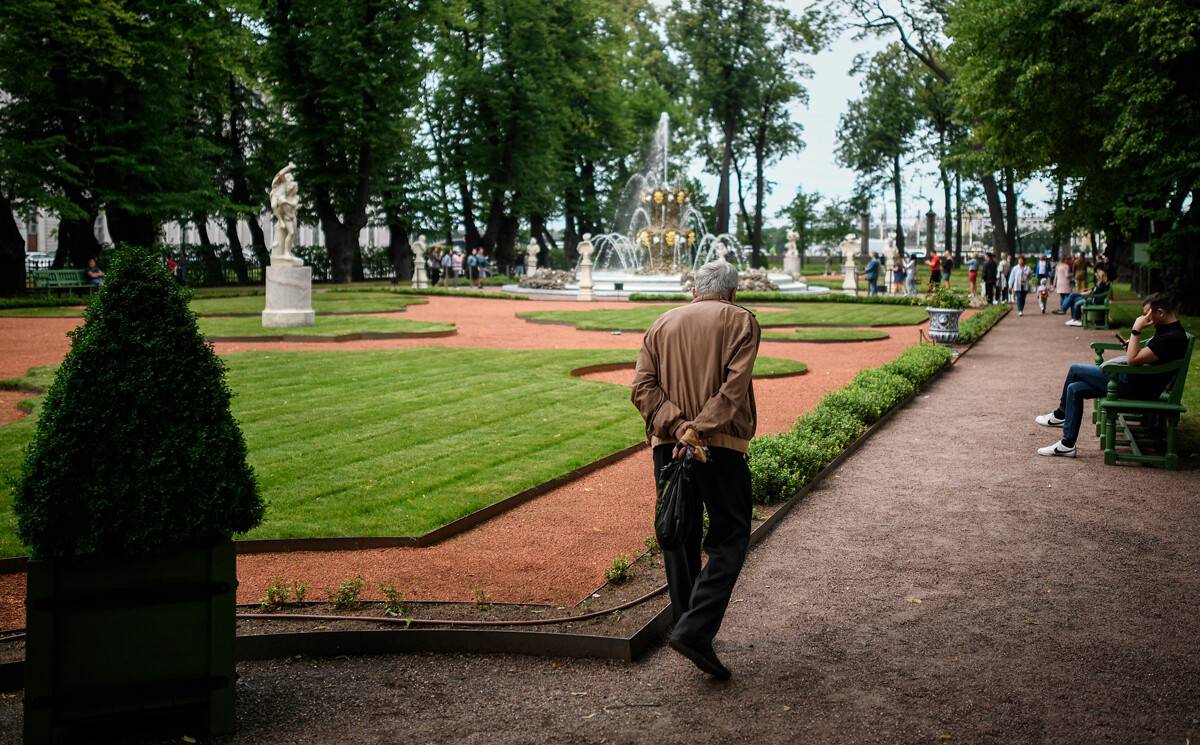
The Crown fountain at the Summer Garden
Vladimir Astapkovich/SputnikToday, the Summer Garden is a veritable open-air museum, as its paths host copies of many statues with themes from Antiquity. During the summer season, the fountains spew forth water. While they are smaller to those at Peterhof, they are just as elegant.
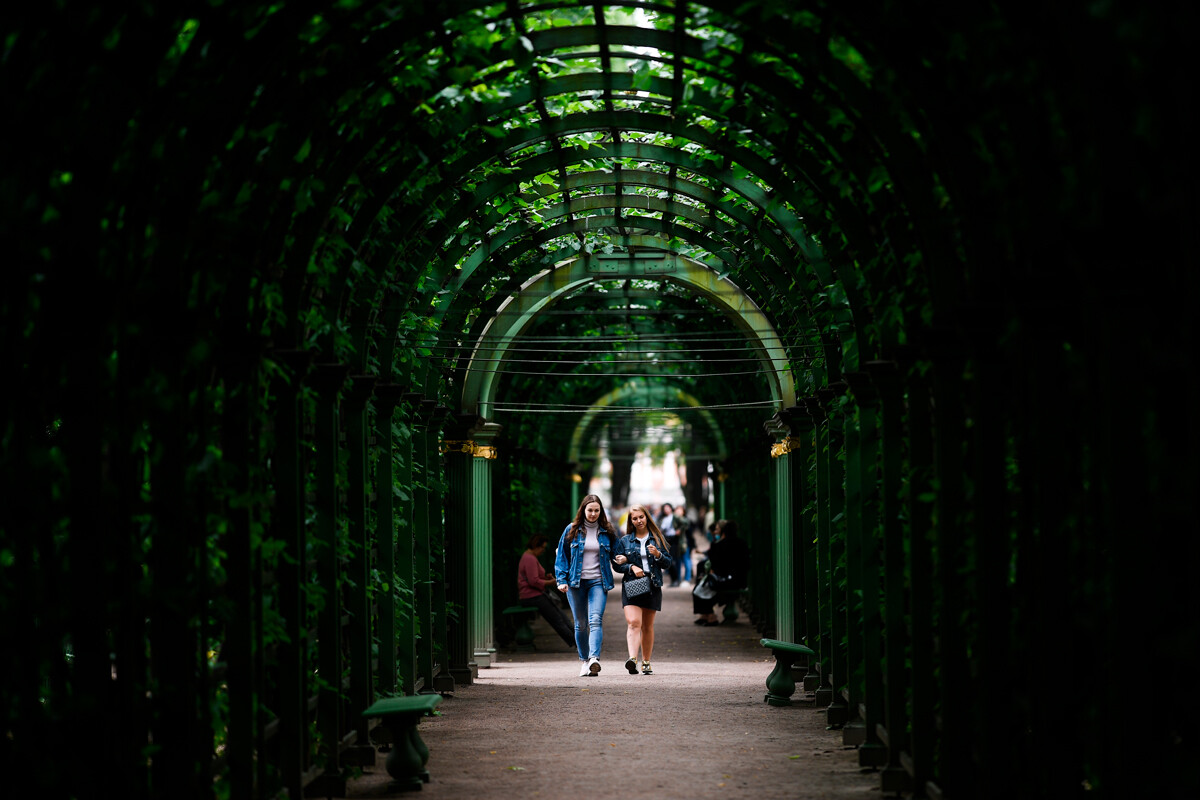
Girls in the Summer Garden green gallery
Vladimir Astapkovich/SputnikThe park now has a modern twist that would shock a time-traveler from the 18th century – in the old ‘Coffee House’ there’s a cafe now where you can listen to jazz.
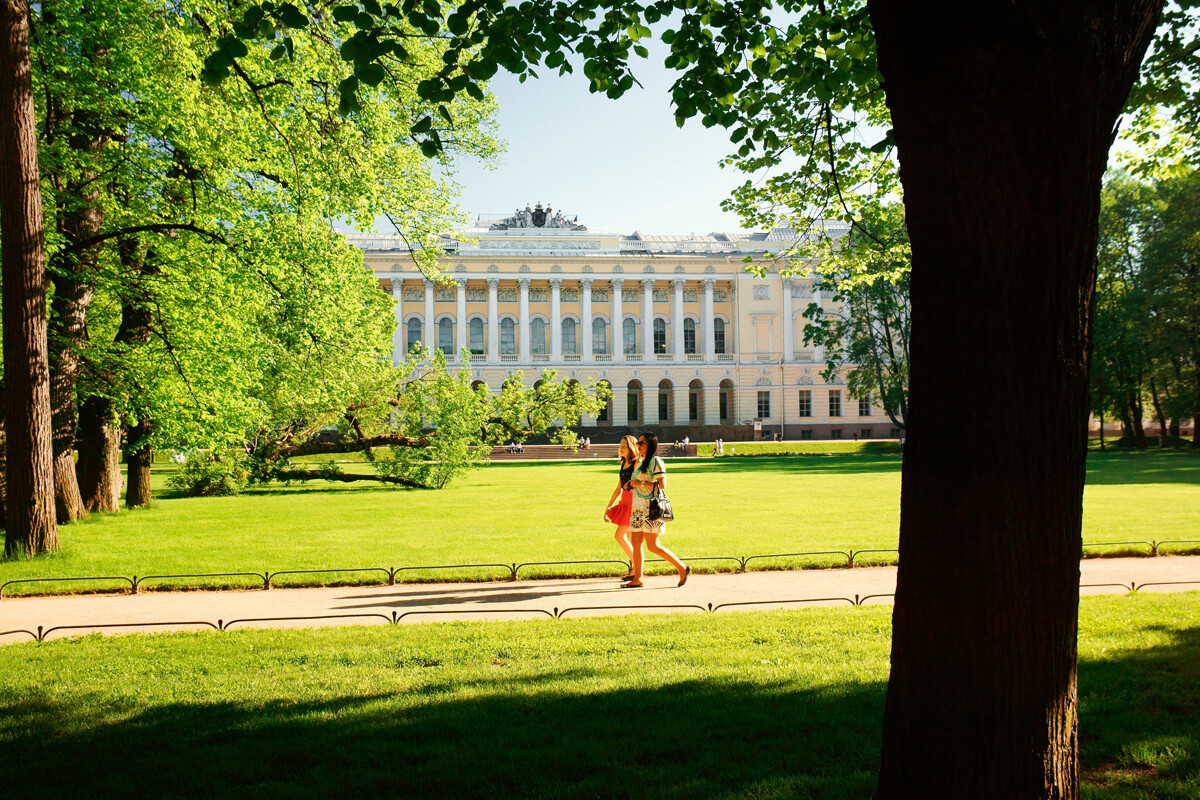
Mikhailovsky Garden near The Russian Museum
Legion MediaThe Mikhailovsky Garden is located not far from the Summer Garden. You can combine a walk in the Mikhailovsky Garden with a visit to the State Russian Museum or the Church of the Savior on Spilled Blood.
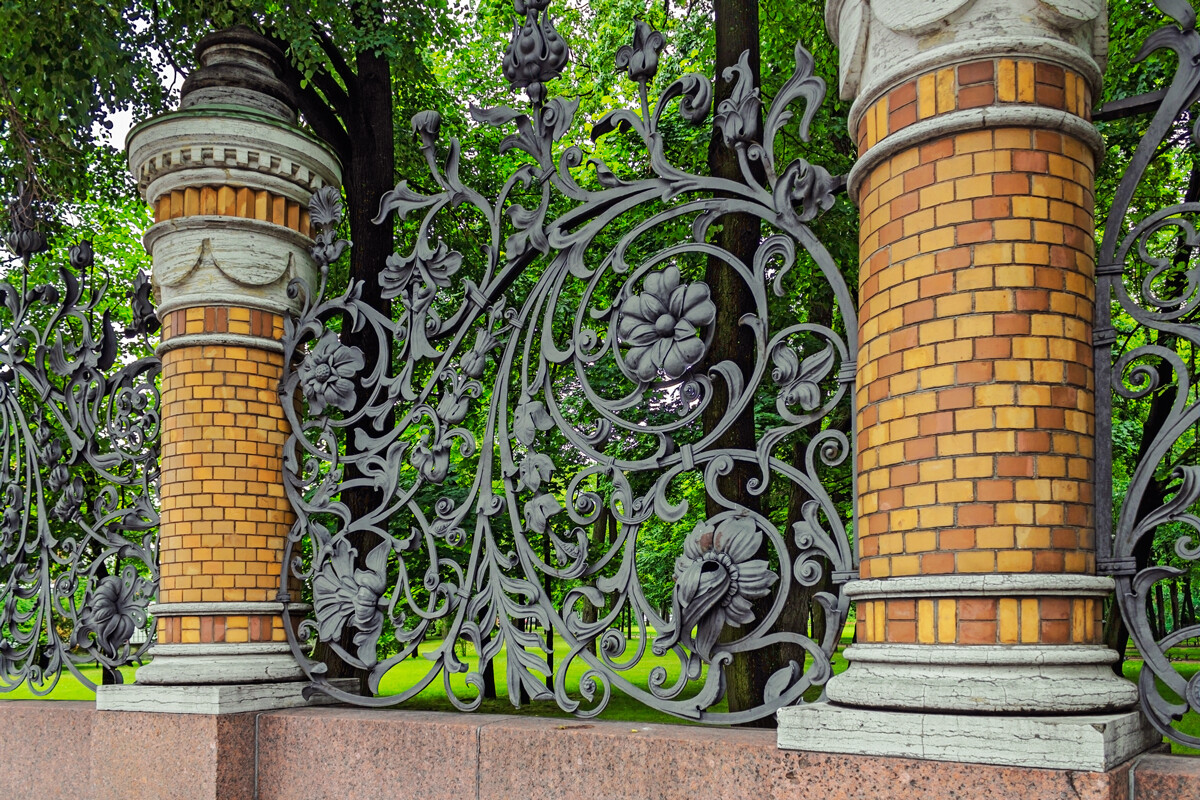
Mikhailovsky Garden fancy fence
Alx_Yago/Getty ImagesOne of the city’s oldest oak trees, planted by Peter the Great, grows on the territory of this garden (the Summer Garden has another one).
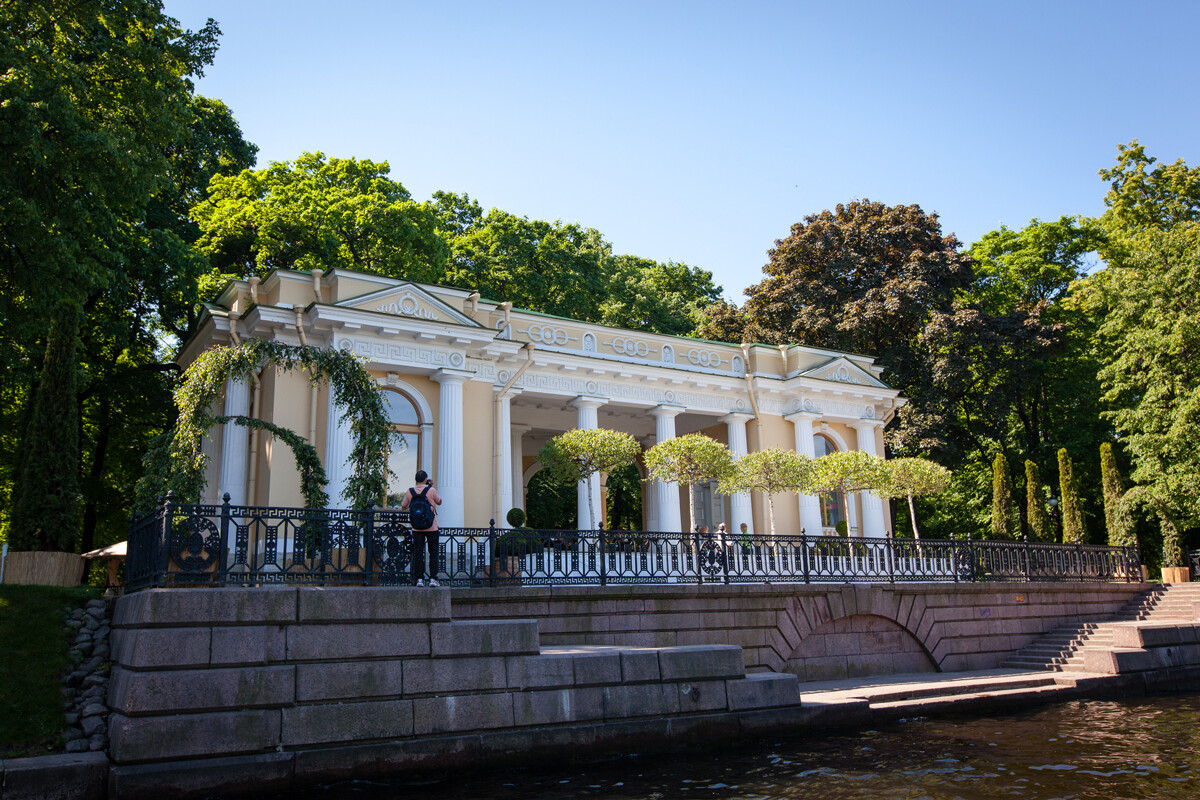
Rossi's Pavilion in the Mikhailovsky Garden
jimmyweee (CC BY 2.0)There’s a pond that’s spanned by an elegant and picturesque bridge, as well as a pavilion. It’s built on the site of a palace that was built for Peter’s wife, Empress Catherine I.
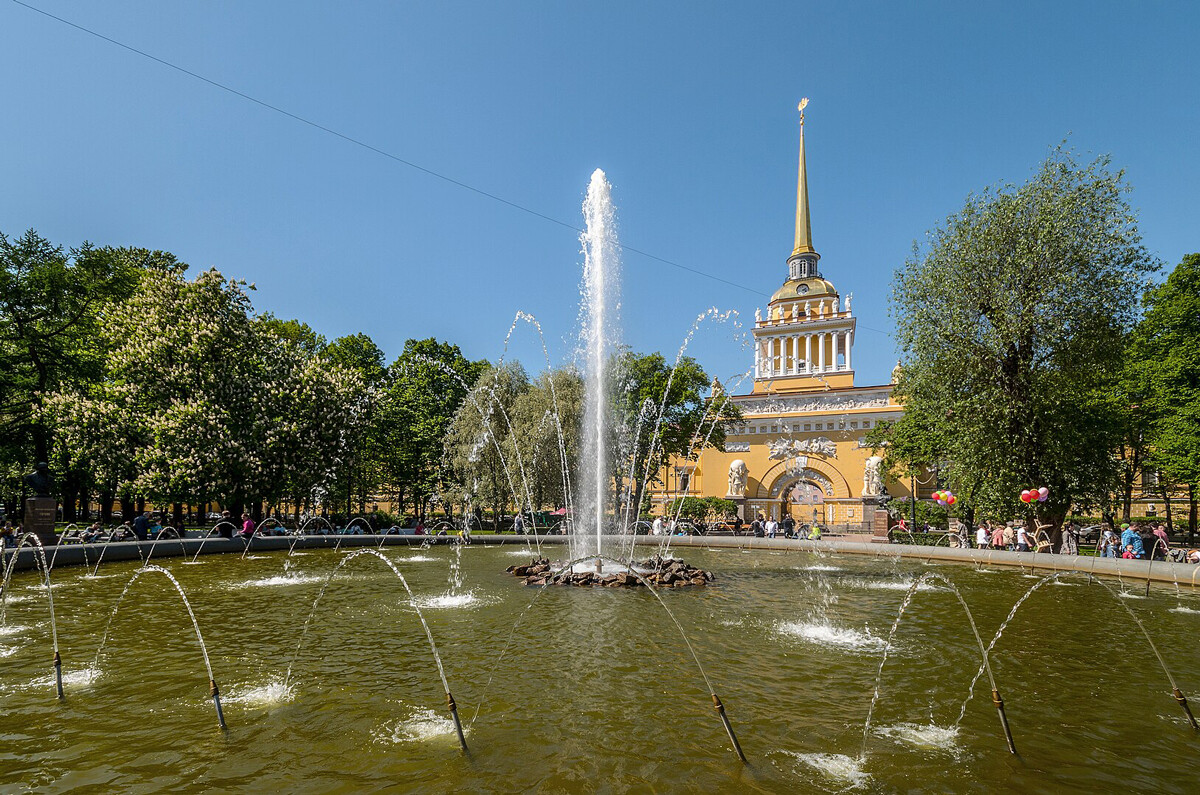
The Alexander Garden (the yellow building on the background is the Admiralty)
Alex 'Florstein' Fedorov (CC BY-SA 4.0)While this is a relatively small garden, it’s right next to the main sites of St. Petersburg: Palace Square and the Winter Palace, the Admiralty, and St. Isaac’s Cathedral. Also, the Bronze Horseman is located on the side of this garden that looks out onto the Neva River.
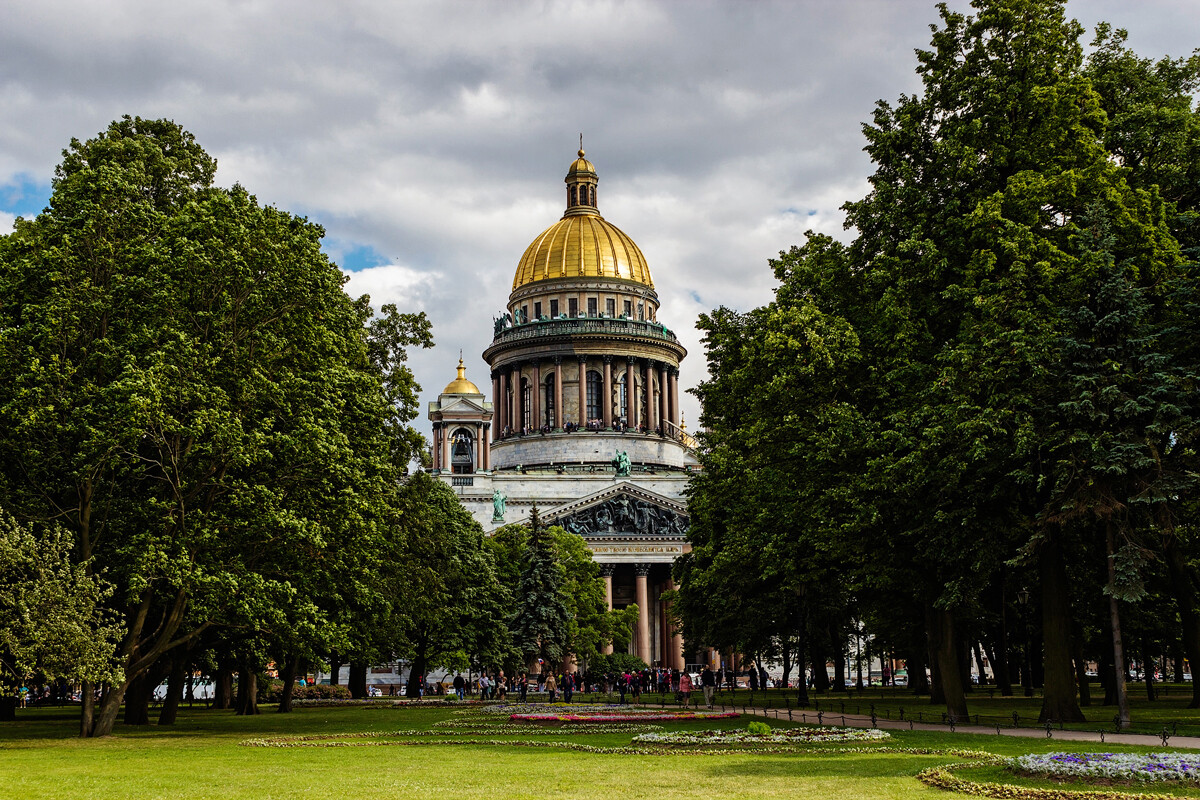
A view to St. Isaac's Cathedral from the Alexander Garden
Alx0yago (CC BY-SA 4.0)Initially, there was an empty plot of land here because it was an earthen embankment, a part of the Admiralty fortifications. Then, ship timber and anchors were stored here; later, public festivities were held on this open field. The Alexander garden was officially opened in 1874; and in 1879, the city’s largest fountain at the time was opened here.
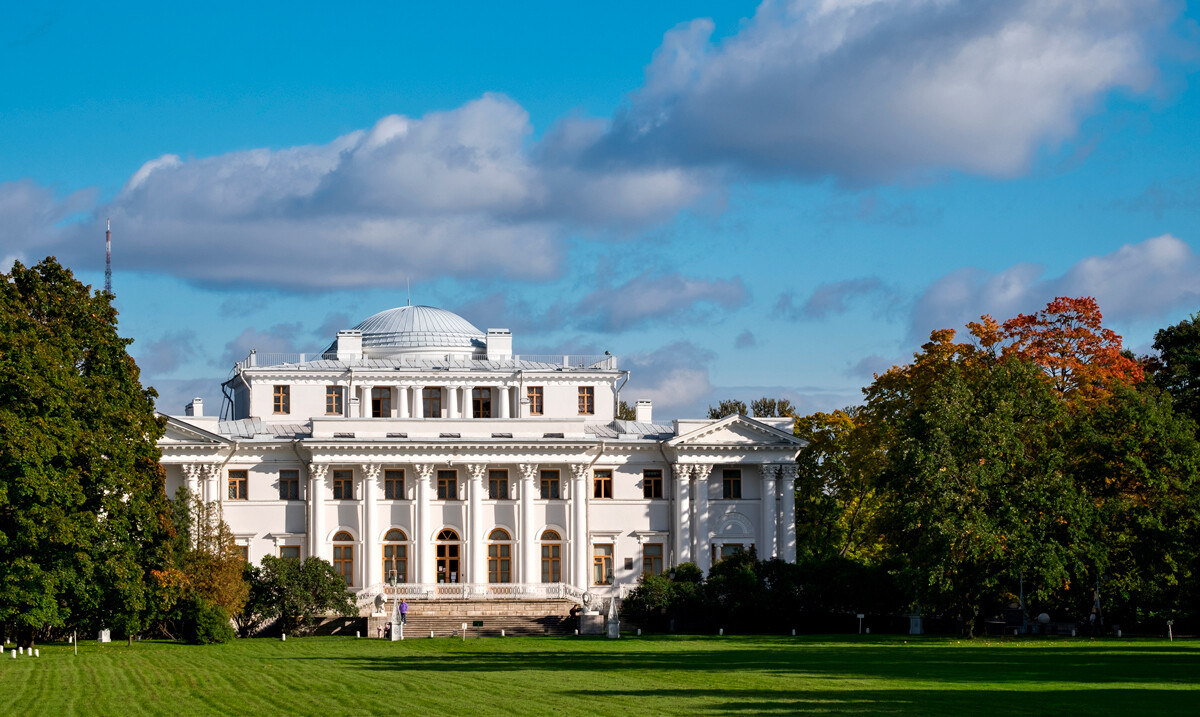
Yelagin Island park
Legion MediaYelagin Island is also a former imperial residence. The imperial family owned the island for about a hundred years, until the 1917 Revolution. Italian architect Carlo Rossi rebuilt Yelagin Palace for the Romanovs, and erected a complex of pavilions and additional buildings. Court gardener Joseph Bush Jr. created an English landscape park on the island, which was the complete opposite of the severe and French-style Summer Garden.
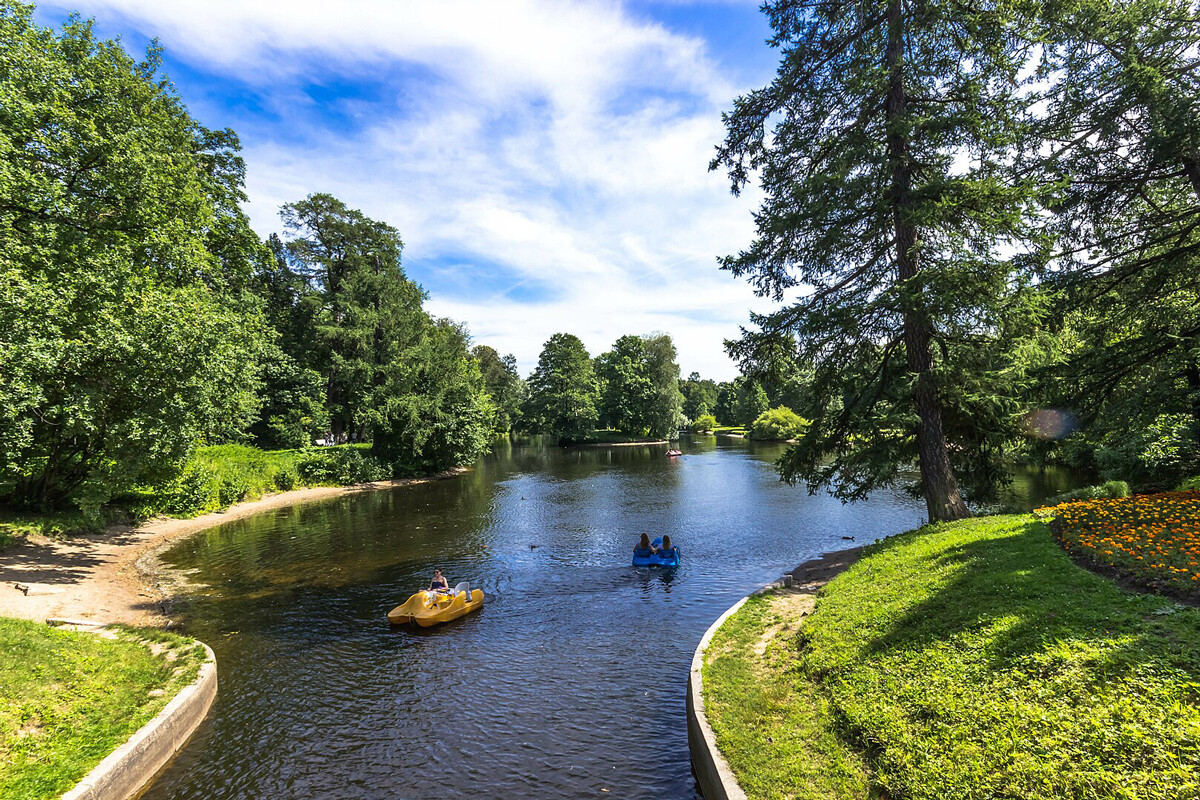
Peaceful boating at Yelagin Island
Damnific (CC BY-SA 4.0)In summer, Yelagin Island hosts concerts, and in winter there’s a skating rink. Inside Yelagin Palace, you’ll see restored imperial interiors; in the Museum of Glass you can learn the technology of heat treatment for glass at a workshop.
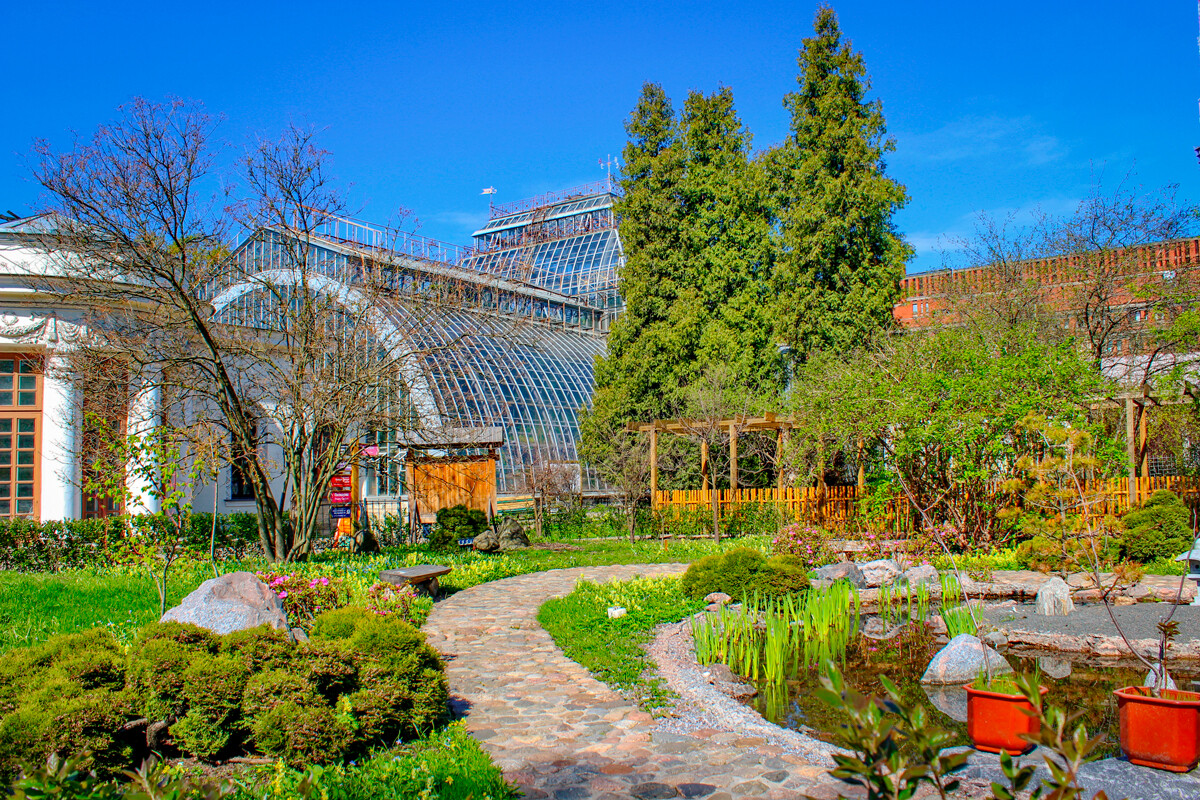
The Botanical Garden of Peter the Great
Legion MediaThe Botanical Garden has one of Russia’s oldest arboretum parks; there’s a Japanese garden and Alpine gardens. A greenhouse complex is the crown jewel, where you can see flowers bloom year-round (there’s also a calendar).
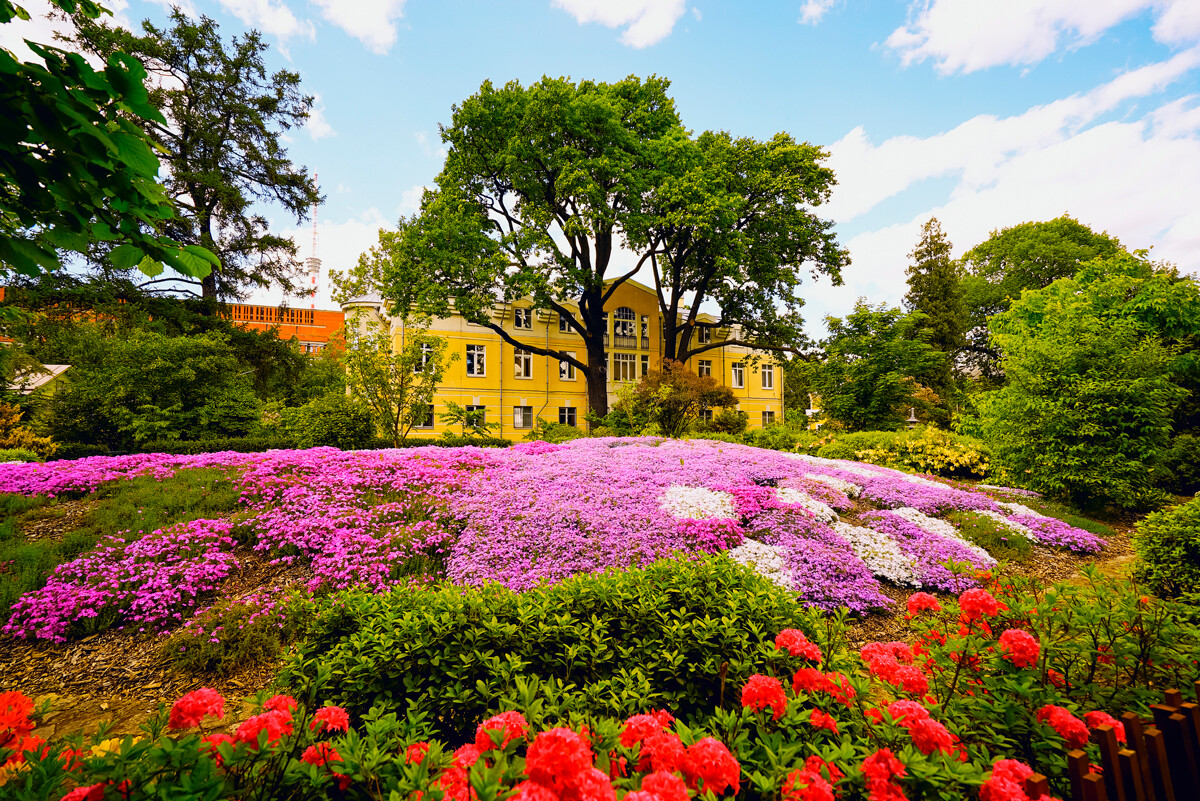
The Botanical Garden of Peter the Great
Legion MediaGuided tours go along three routes – subtropical, tropical, and one with a view of water plants. In summer, the garden hosts open-air concerts; in winter there’s a light show.
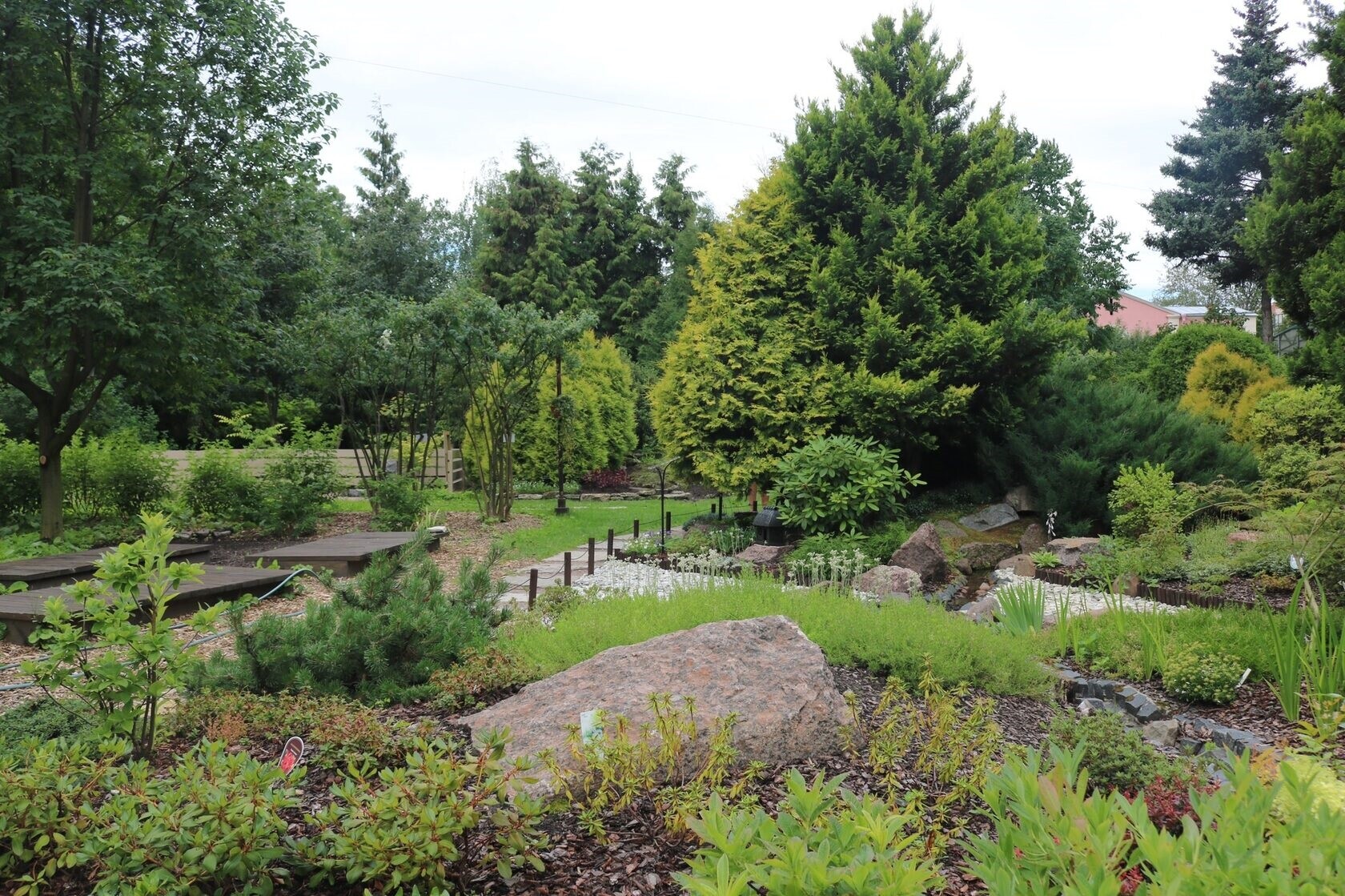
The Botanical Garden of St. Petersburg State University
hortus.spbu.ruThe university’s botanical garden is smaller than the previous one, but it will delight flora enthusiasts. There are two large greenhouses on the territory – a Japanese garden and an arboretum. On your way back you can take a peek at the Faculty of Philosophy’s yard and see the collection of unusual monuments from around the world.
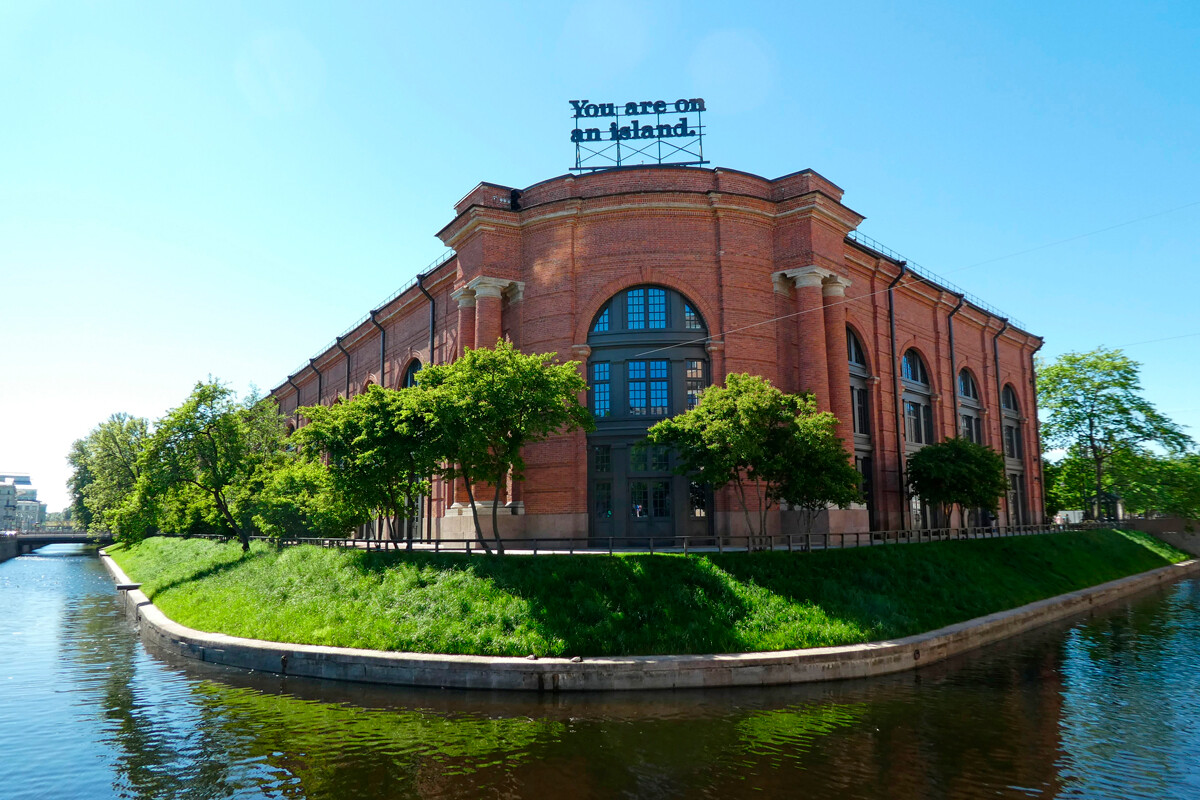
New Holland
Ekaterina Borisova (CC BY-SA 4.0)New Holland is now a hip and trendy public space; and being an island, it’s sufficiently isolated from the hustle and bustle of the city center.

In front of the former prison, the ‘Bottle House’
Afanasovich (CC BY-SA 4.0)During the time of Peter the Great, timber was dried here and used for building ships. Later, a prison was built here, and eventually the Navy Department buildings. Today, boutiques and restaurants occupy the former building of the naval prison – the ‘Bottle House’.
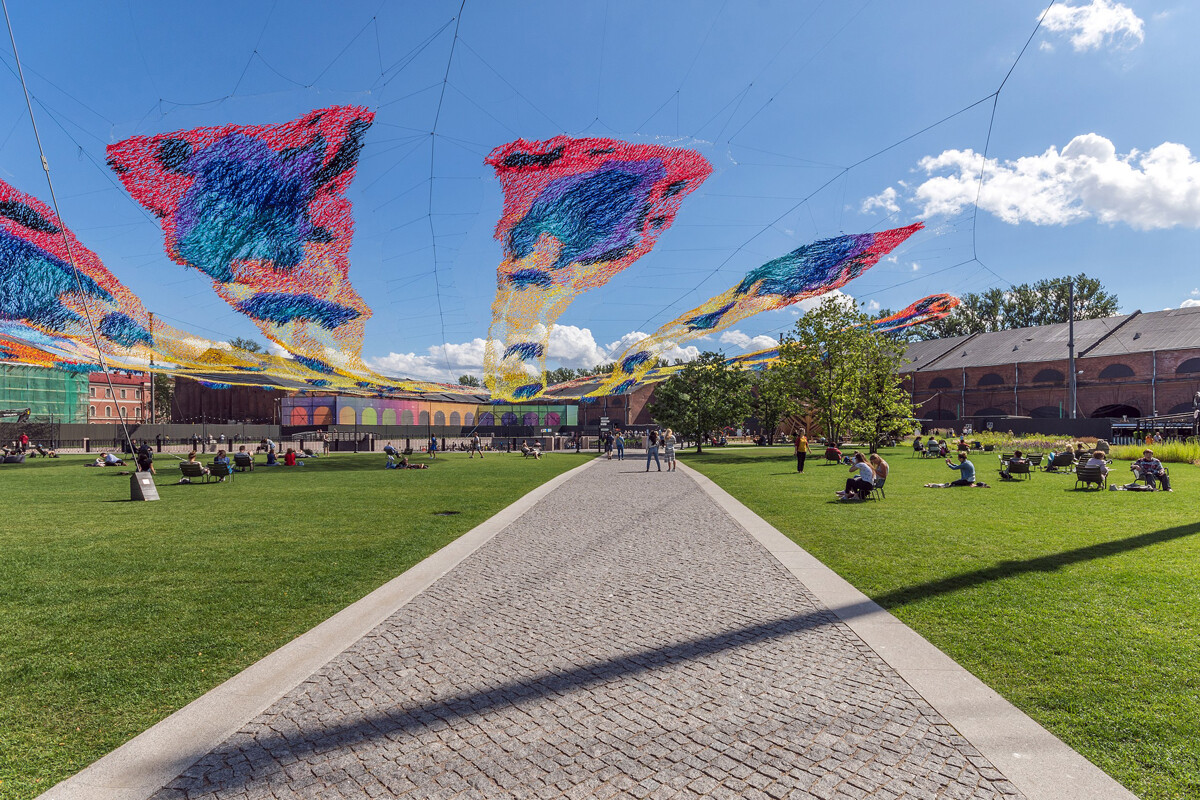
New Holland public space
Alex 'Florstein' Fedorov (CC BY-SA 4.0)Also, a children’s center now occupies the former Commandant’s house. Concerts are held on a field in the center of the island, and in winter it’s used as a skating rink.
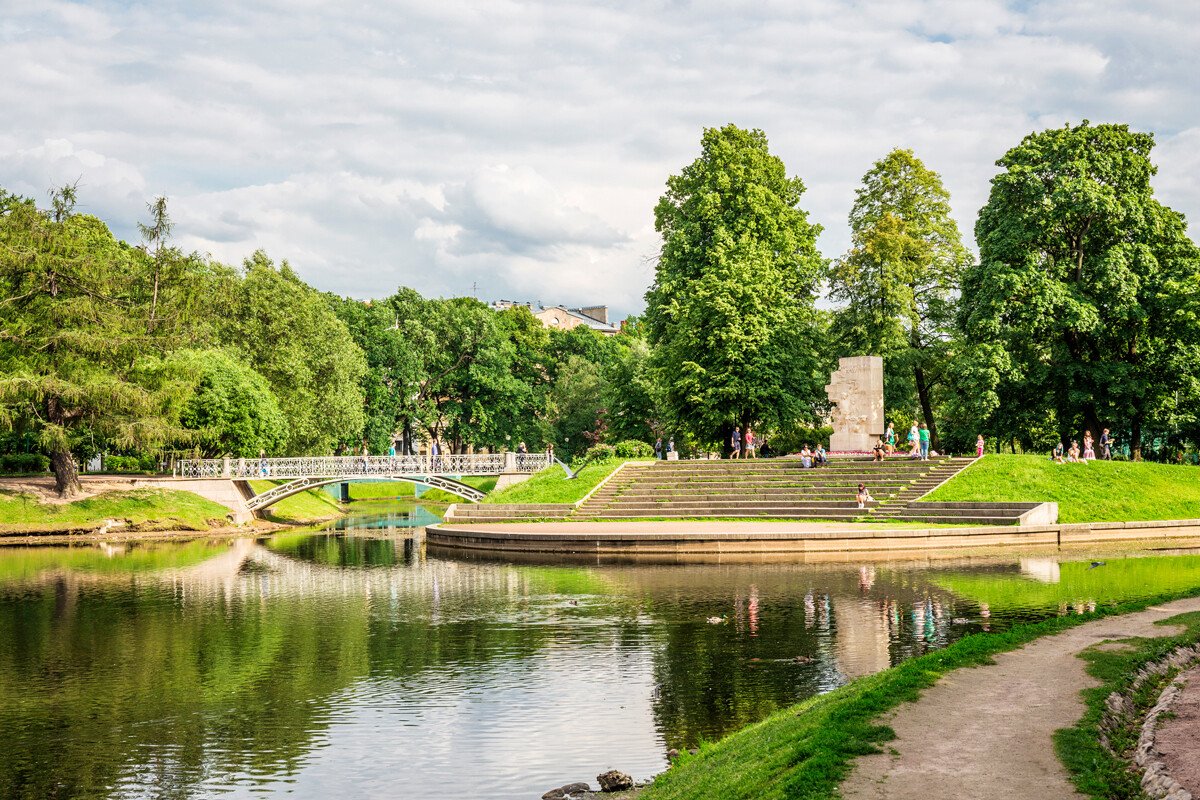
Tauride (Tavrichesky) Garden
Legion MediaThis is the largest green zone of St. Petersburg’s Central District. We suggest you stop and take a look on your way to Smolny Cathedral. The garden was built near the Tauride Palace – the residence of Catherine the Great’s favorite, Prince Grigory Potemkin-Tavrichesky.
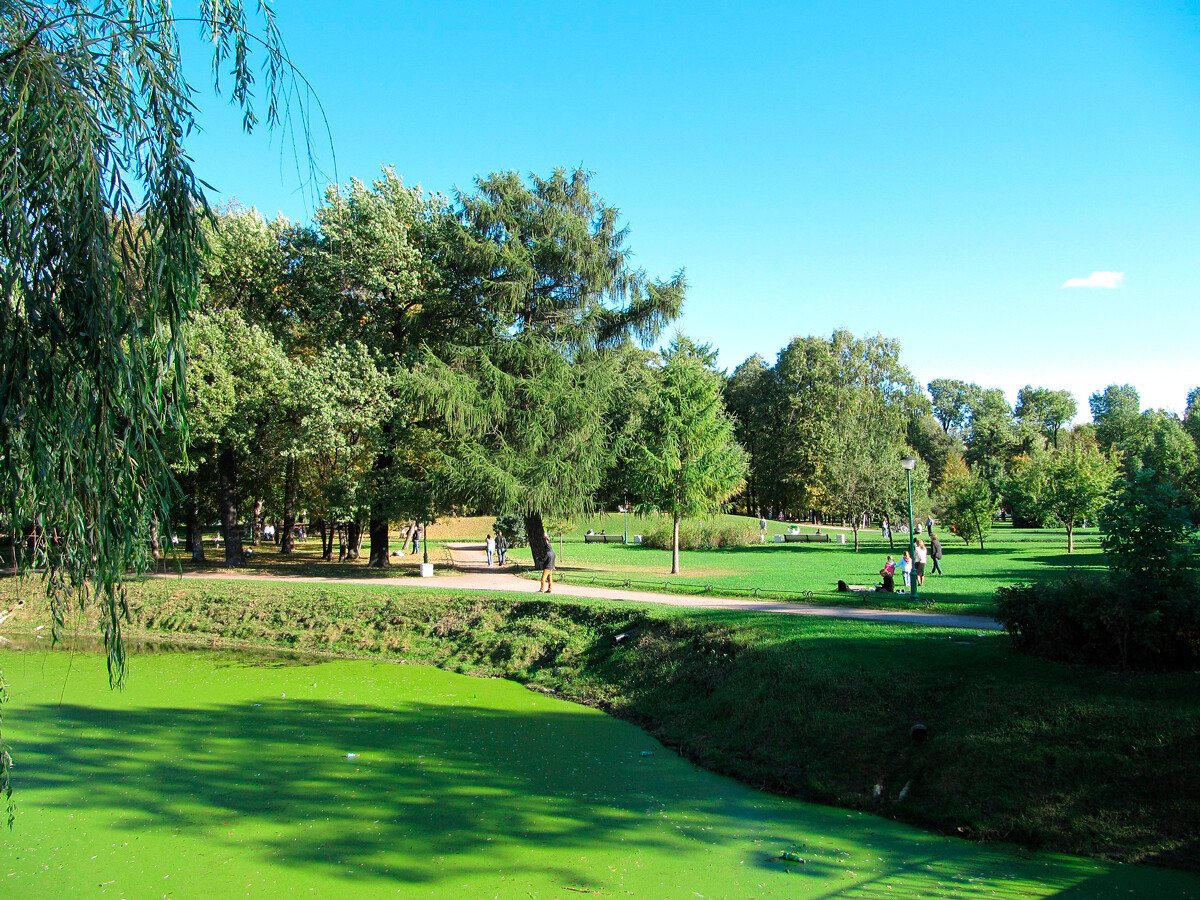
The garden of the Tauride Palace
LenaLi Diva (CC BY-SA 3.0)Today, the palace hosts the headquarters of the CIS Interparliamentary Assembly, while the garden is open for visitors. City festivals are held here year-round. In winter, the locals enjoy ice-skating and skiing here, in other seasons they come for a jog or for some Nordic walking. The garden has its own small greenhouse. Concerts are held indoors; and there’s also a cafe.
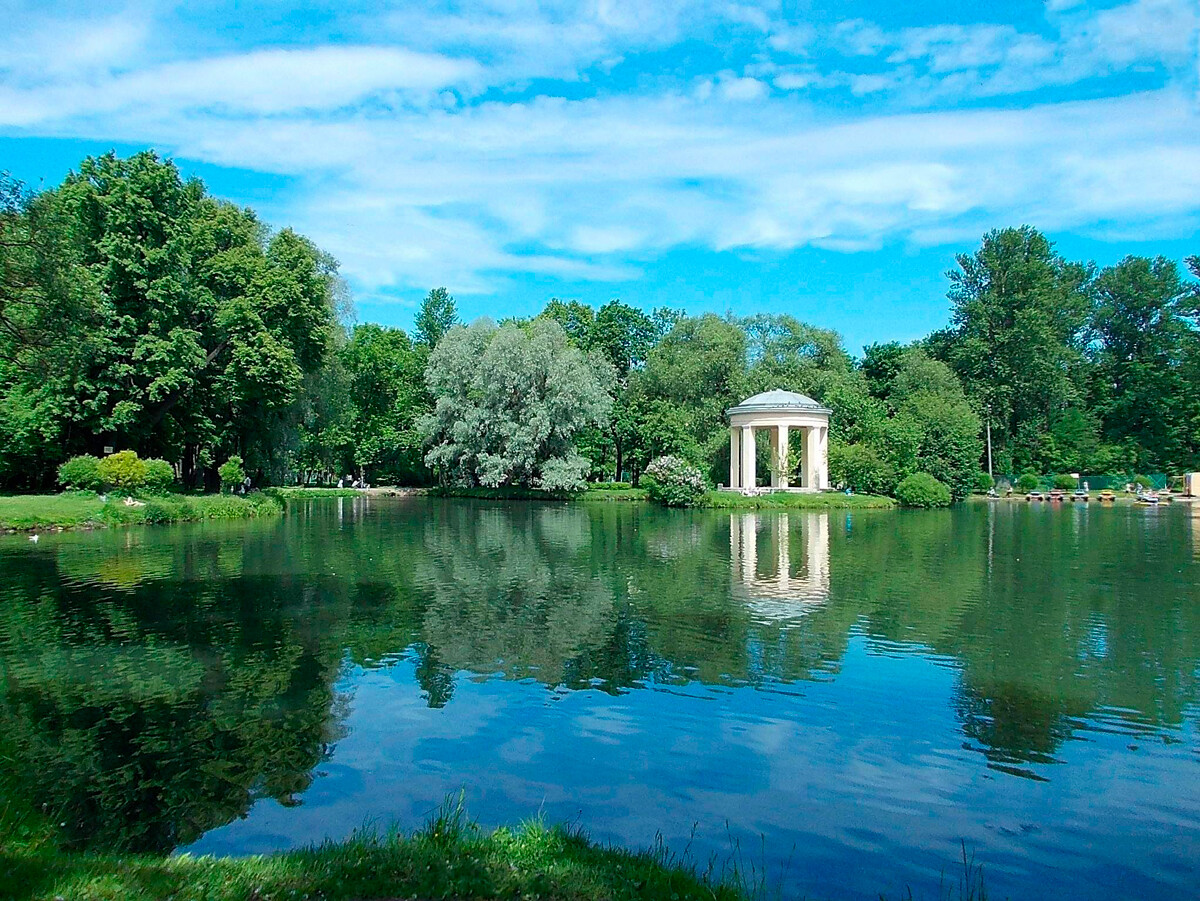
Peaceful Ekaterinhof park
Uz1awa (CC BY-SA 4.0)This park lies not far from the Narva Triumphal Arch, erected to commemorate the victory in the Patriotic War of 1812. Ekaterinhof is also a monument to victories that were achieved a century earlier: in this region on May 7, 1703, Peter the Great secured Russia’s first naval victory over the Swedes. He built an estate here and presented it to his wife, Ekaterina, as a wedding gift. Ekaterinhof means ‘the courtyard of Catherine’. During the time of Peter the Great, May festivities were held annually in this garden in order to celebrate the anniversary of this naval victory.
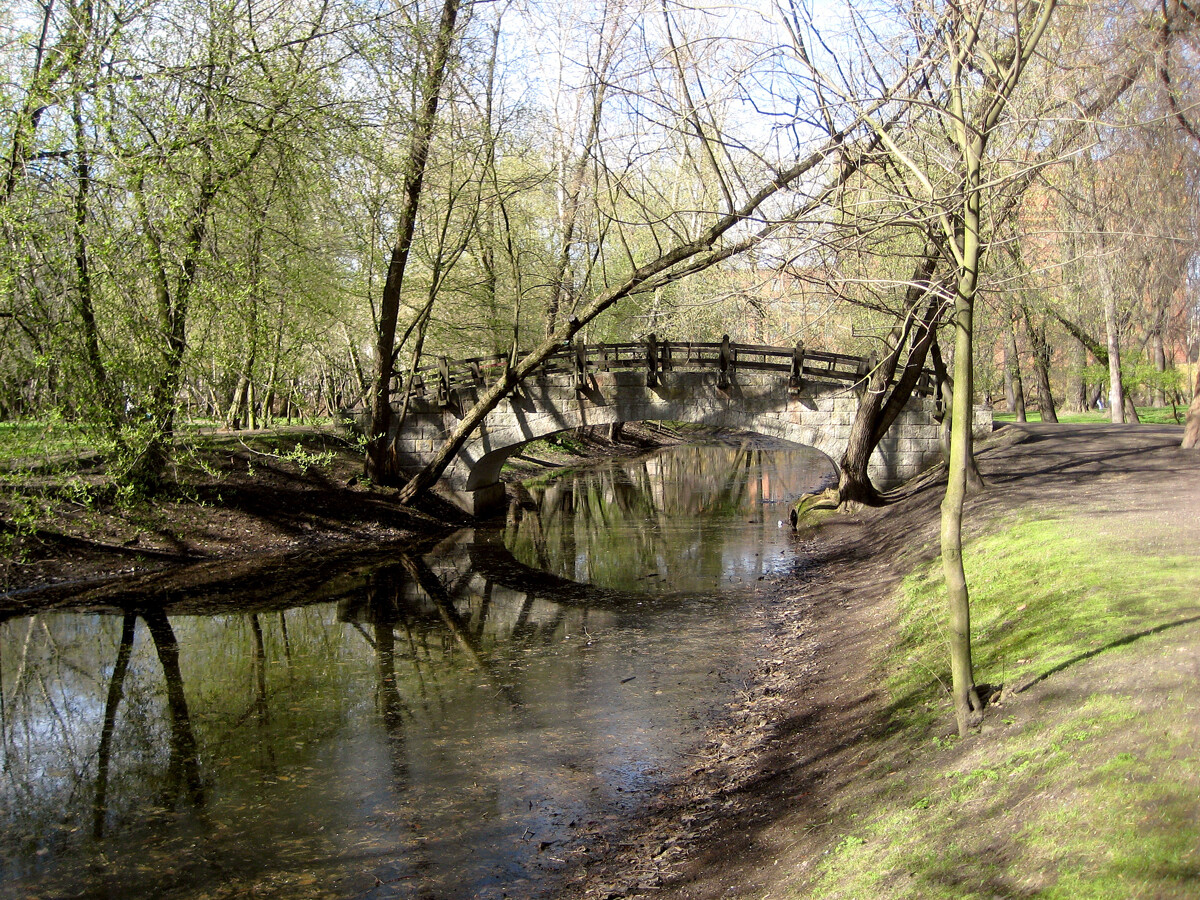
Ekaterinhof was a wedding gift from Peter the Great to his wife Catherine
GAlexandrova (CC BY-SA 4.0)Later, the estate was converted into a milk farm, then into fruit and vegetable gardens, and finally the public festivities were once again held here. Today, it hosts sports and art festivals; there are tennis courts, and you can rent a boat.
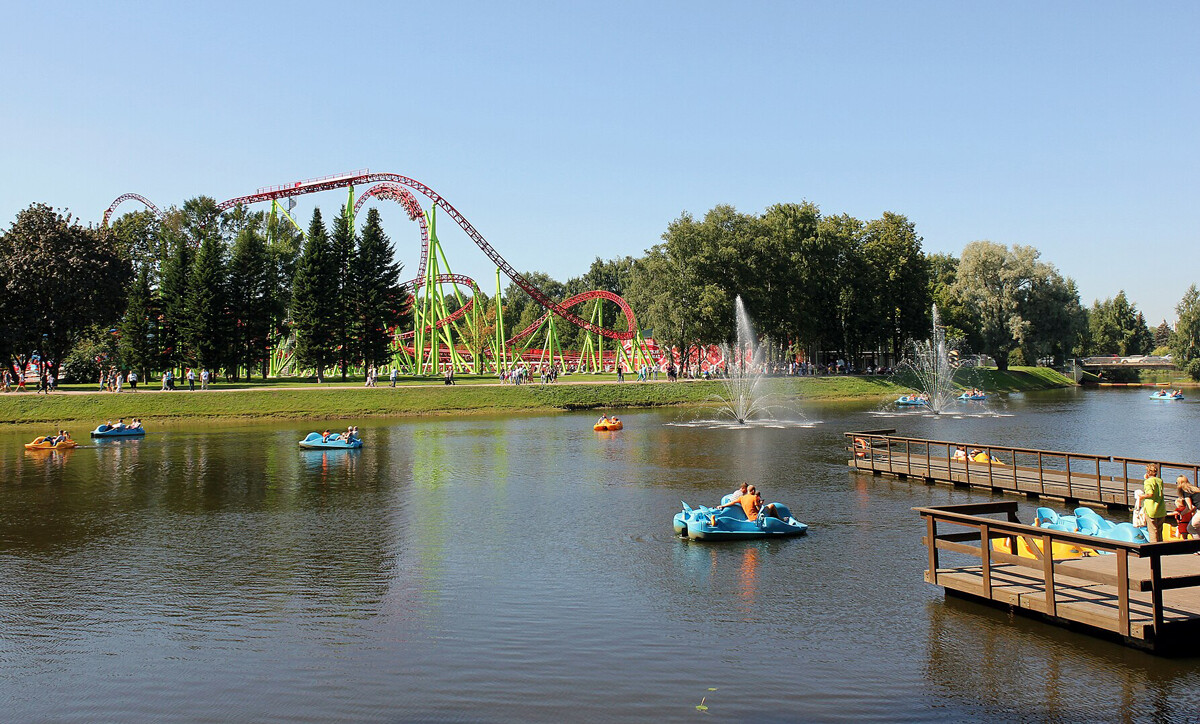
Amusement park on the Krestovsky Island
Bestalex (CC BY-SA 4.0)St. Petersburg’s prestigious Krestovsky Island has a large park with wide promenades where you can ride a bike, a skateboard, or a kick scooter. You can also feed squirrels and swans, come for a picnic, or sample something delicious on the food truck street. There’s also the large Divo Ostrov amusement park.

Maritime Victory Park
Alexei Reshetnikov (CC BY-SA 3.0)Here, you can also see one of Russia’s most modern stadiums – the flying saucer-esque Gazprom Arena stadium – which is on the western end of Krestovsky Island. Behind it is a wide embankment with a view of the Gulf of Finland and the sleek structures of 21st century St. Petersburg: a new cable bridge and the Lakhta Center skyscraper.
Dear readers,
Our website and social media accounts are under threat of being restricted or banned, due to the current circumstances. So, to keep up with our latest content, simply do the following:
If using any of Russia Beyond's content, partly or in full, always provide an active hyperlink to the original material.
Subscribe
to our newsletter!
Get the week's best stories straight to your inbox